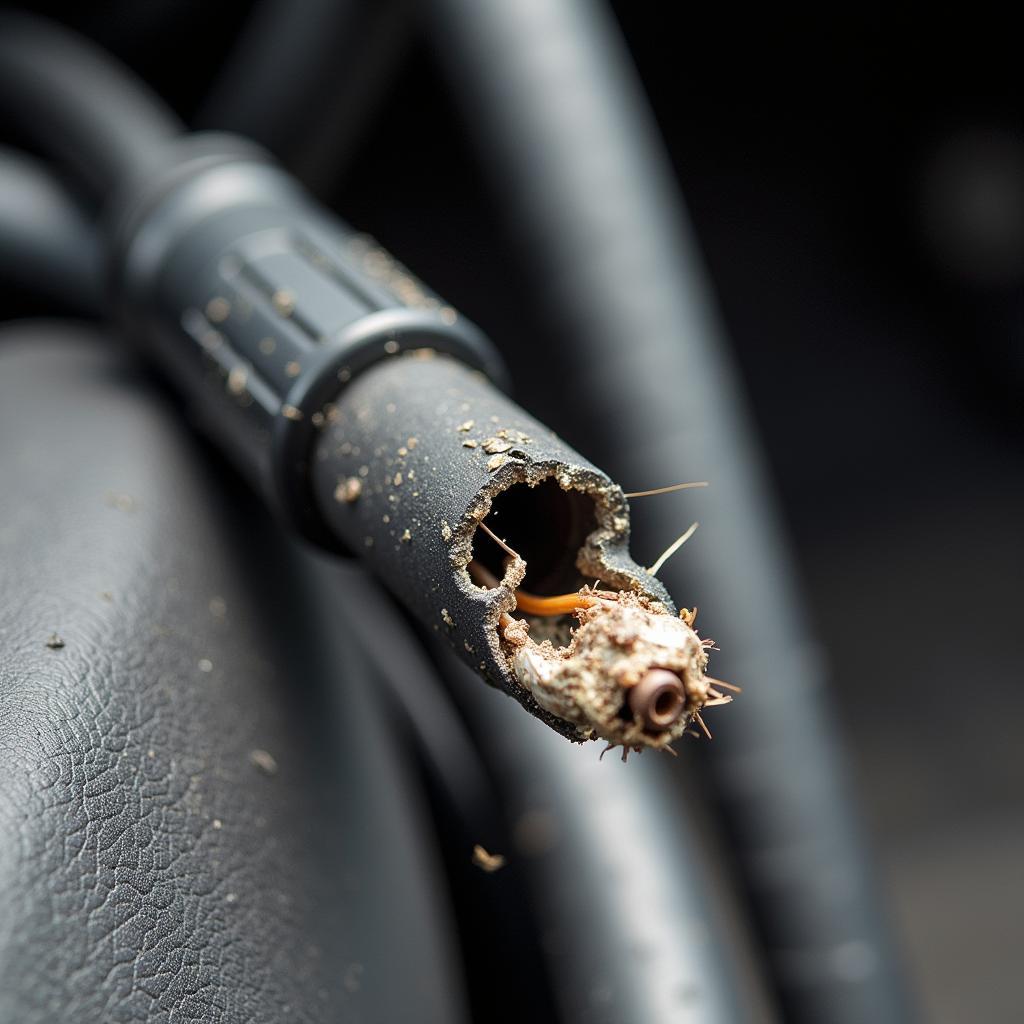Discovering paint damage on your car can be disheartening, but don’t worry! Many solutions exist, ranging from DIY fixes for minor scratches to professional repairs for more severe issues. This guide will cover everything you need to know about how to fix paint damage on a car and restore your vehicle’s pristine look.
 Types of Car Paint Scratches
Types of Car Paint Scratches
Assessing the Damage: What Kind of Paint Problem Are You Dealing With?
Before you start fixing paint damage on a car, it’s crucial to understand the type and severity of the damage. This assessment will determine the best course of action. Here are some common types of car paint damage:
- Clear coat scratches: These are the most superficial scratches, affecting only the clear coat layer. They appear as fine, white lines and can often be fixed with DIY methods.
- Paint scratches: These scratches go deeper than the clear coat, reaching the base coat. They are more noticeable and might require touch-up paint or professional help.
- Paint chips: These are small, chipped-off areas of paint, often caused by rocks or road debris. They expose the bare metal underneath and need immediate attention to prevent rust.
- Scratches that reach the primer: These are deep scratches that go through the paint and expose the primer layer. They require more extensive repairs to prevent rust and further damage.
- Scratches that reach the metal: These are the deepest scratches, exposing the bare metal underneath. They require immediate attention to prevent rust and structural damage.
DIY Solutions for Minor Car Paint Damage
For minor scratches and imperfections, several DIY methods can effectively fix the paint damage on your car.
1. Using a Car Scratch Remover
Car scratch removers are abrasive compounds that can buff out light scratches and swirl marks. Here’s how to use one:
- Clean the affected area: Wash and dry the damaged area thoroughly.
- Apply the scratch remover: Apply a small amount of scratch remover to a clean microfiber cloth.
- Buff the scratch: Rub the cloth in a circular motion over the scratch, applying gentle pressure.
- Wipe off the residue: Use a clean microfiber cloth to wipe away any remaining residue.
2. Trying a DIY Car Scratch Repair Kit
Car scratch repair kits usually contain a rubbing compound, polish, and sealant. They offer a more comprehensive solution for minor scratches. Follow the instructions provided in the kit for the best results.
3. Fixing Paint Chips with Touch-Up Paint
For small paint chips, touch-up paint can effectively conceal the damage and prevent rust. Here’s how to apply it:
- Clean the chip: Clean the chipped area with soap and water, then let it dry completely.
- Apply the touch-up paint: Dip the tip of the touch-up paint pen or brush into the paint, ensuring not to overload it.
- Dab the paint onto the chip: Carefully dab the paint onto the chip, applying thin layers until the chip is filled.
- Let it dry: Allow the touch-up paint to dry completely before applying a clear coat (if necessary).
 Applying Car Touch-Up Paint
Applying Car Touch-Up Paint
When to Seek Professional Help for Car Paint Damage
While DIY methods can handle minor paint damage, more severe issues often require professional intervention. Consider taking your car to a reputable auto body shop if:
- The scratch is deep and exposes the metal: Deep scratches require professional techniques like sanding, filling, and repainting to restore the car’s structural integrity and prevent rust.
- The damage is extensive: If the paint damage covers a large area or involves dents, professional repair is recommended for the best results.
- You’re not comfortable with DIY repairs: If you’re unsure about performing the repairs yourself, seeking professional help is always a safe bet.
Preventing Future Paint Damage
Prevention is always better than cure. Here are some tips to help you protect your car’s paint:
- Regular washing and waxing: Regularly washing your car removes dirt and grime that can scratch the paint. Waxing provides a protective layer that shields the paint from minor damage.
- Careful parking: Park your car away from potential hazards like shopping carts, low-hanging branches, and areas with high pedestrian traffic.
- Use a car cover: If you park your car outdoors for extended periods, using a car cover can protect it from the elements and other potential sources of damage.
ca how much to fix dent in car
Conclusion
Fixing paint damage on a car is essential for maintaining its appearance and value. While DIY solutions can effectively address minor issues, don’t hesitate to seek professional help for more severe damage. Remember, regular maintenance and preventative measures go a long way in protecting your car’s paint and keeping it looking its best for years to come.
Need help with your car’s paint? Don’t hesitate to contact the experts at AutoTipPro. We provide professional car repair services, including paint correction and restoration. Call us at +1 (641) 206-8880 or visit our office at 500 N St Mary’s St, San Antonio, TX 78205, United States.







Leave a Reply